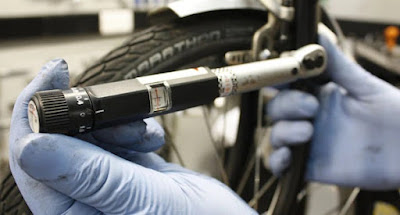Torque Tightening of Bolts: Method and Benefits
Torque Tightening of Bolts
The question frequently arises regarding how the nut or the bolt head should be tightened. The solution relies on which fixing process is being utilized. If torque-controlled tightening, regardless of whether the nut is tightened and the bolt head held, or the bolt head tightened and the nut held, can be important.
Regarding bolt fixing, it's not quite as simple as "righty tighty, lefty loosey." We need to understand the physics of industrial bolting to guarantee that these bolts can bear incredible weight loads. It begins with torque.
What is Torque Tightening of Bolts?
Torque tightening is the use of torque to a nut permitting a bolt to be pre-stacked. Pre-load in a bolt is a pivotal force that makes strain. As each force has an equal and opposite response, bolt pre-load is equal and opposite to the clipping force seen on the materials in the joint. At the point when we apply a more noteworthy torque, a more noteworthy bolt pre-load and compressive force are viewed thus.
A torque is the result of a force and a length. Consequently, if we apply a similar force with a more giant wrench, we will present more torque. It is normal for large torques on a joint to be applied with large torque wrenches because accomplishing it without them is extremely difficult.
Torque Tightening and Preload
The amount of torquing for preload is largely dependent on the impacts of friction. There are three unique components of torque factors:
Torque to stretch the bolt
Torque to overcome friction in bolt and nut strings
Torque to defeat friction at the nut spot face (bearing contact surface)
The formula to calculate the residual burden is:
Preload (residual burden) = Applied Torque - Frictional Loss
What Effects Torque Tightening?
Various factors affect torque tightening. Some of them are:
Lubricants: Torque tightening works on the principle of friction. Anything that will influence the friction between parts of the framework will influence the torque applied. It is normal for the clasp to be greased up or have a thread lock applied before they have torqued applied. The basic role of utilizing a lubricant on the thread of a bolt is to make bolt tightening more proficient.
Surfaces: While applying torque to a bolt and nut, they will interface and create friction when it's tightened. Keeping these surfaces consistent, allowing a repeatable and consistent process, is pivotal for torque tightening bolts. This is where washers come in. Utilizing washers gives a consistent surface like clockwork. Washers should be utilized under the two nuts and bolt heads to give however much consistency as could reasonably be expected, applying torque tightening correctly.
How Much Torque Should Be applied?
How much torque is expected for a latch is dependent on a few factors, for example, the bolt size, the bolt material, the washer utilized, and so on. In this segment, we will zero in on the material of the endlessly bolt size. The grades of steel connote how much pressure (elasticity) the bolt can deal with.
Bolts are ordinarily produced by stepping on top of the bolt head. There are ordinarily two stampings:
1) To mean the grade of the material utilized
2) The company that fabricated the fasteners.
Benefits of Torque Tightening
The greatest benefit of torque tightening to bolts permits control and even dispersion of torque to all bolts allowing adequate pre-burden to be applied. Furthermore, it will keep bolts from being over-tightened. The calculation will permit the creator of the framework to guarantee it is protected and the bolts are tight with torque applied correctly.
Outlook
Torque tightening is a critical process in the structure phase of assembling, which will decide the security of a framework. Many variables can influence the torque tightening process, for example, the grade of the bolt, the washers utilized, the size of the bolt, and so on. Without a torque tightening process, the torque applied to a bolt is obscure and may potentially prompt over-torquing. Over-torquing will take the latch past its versatile breaking point and incite plastic deformation. A result of this will be a quick detrimental disappointment.





Comments
Post a Comment